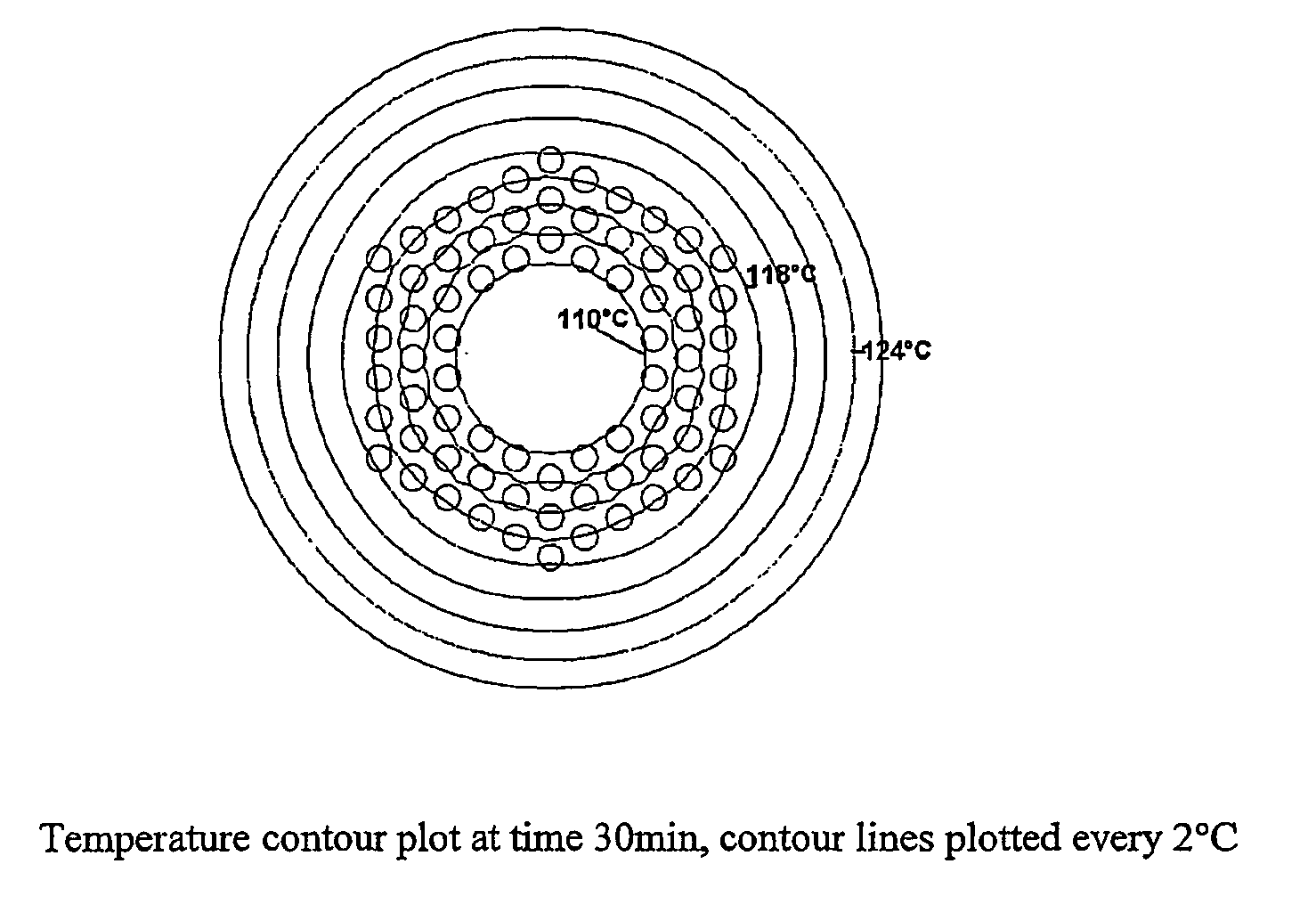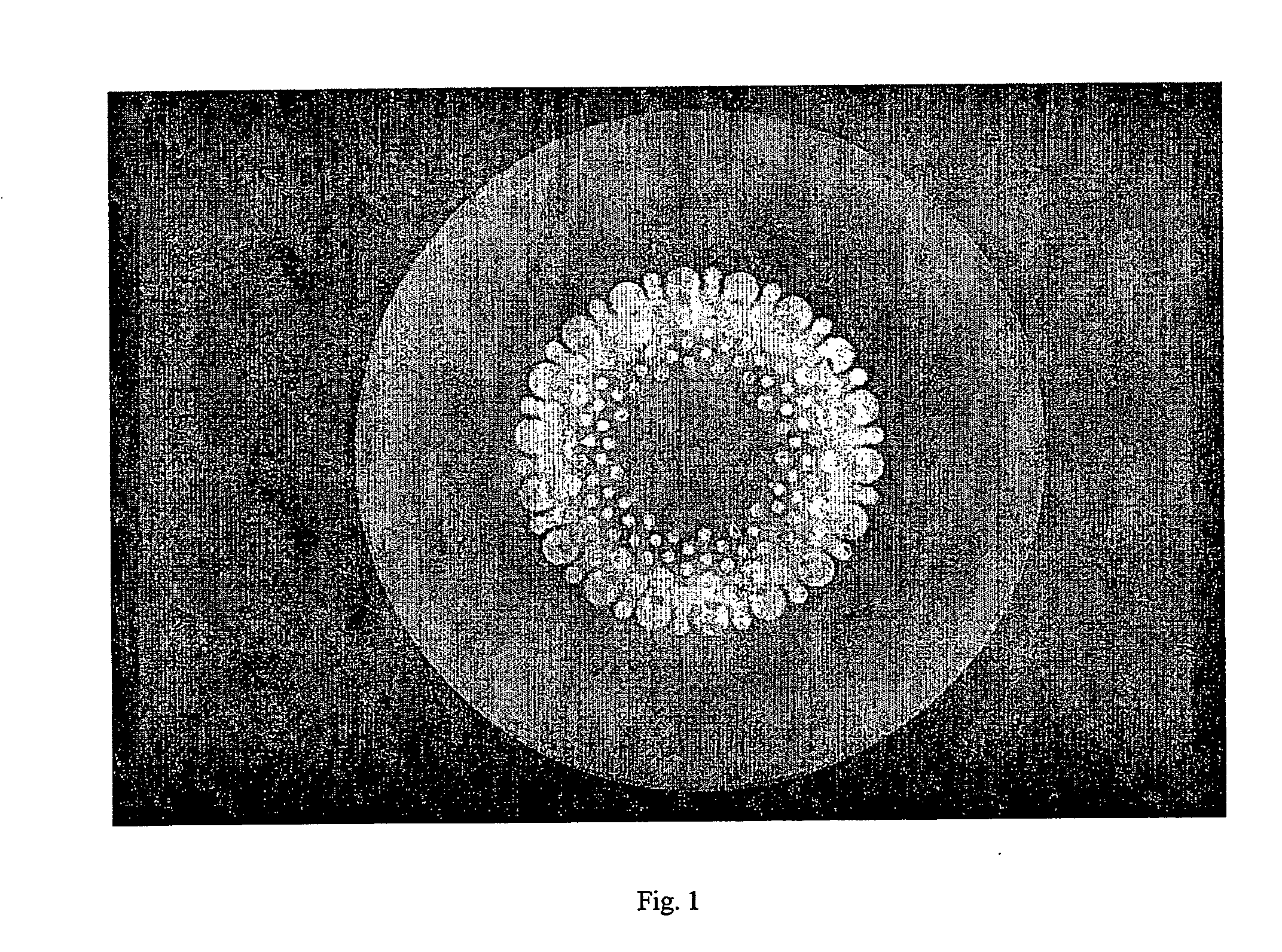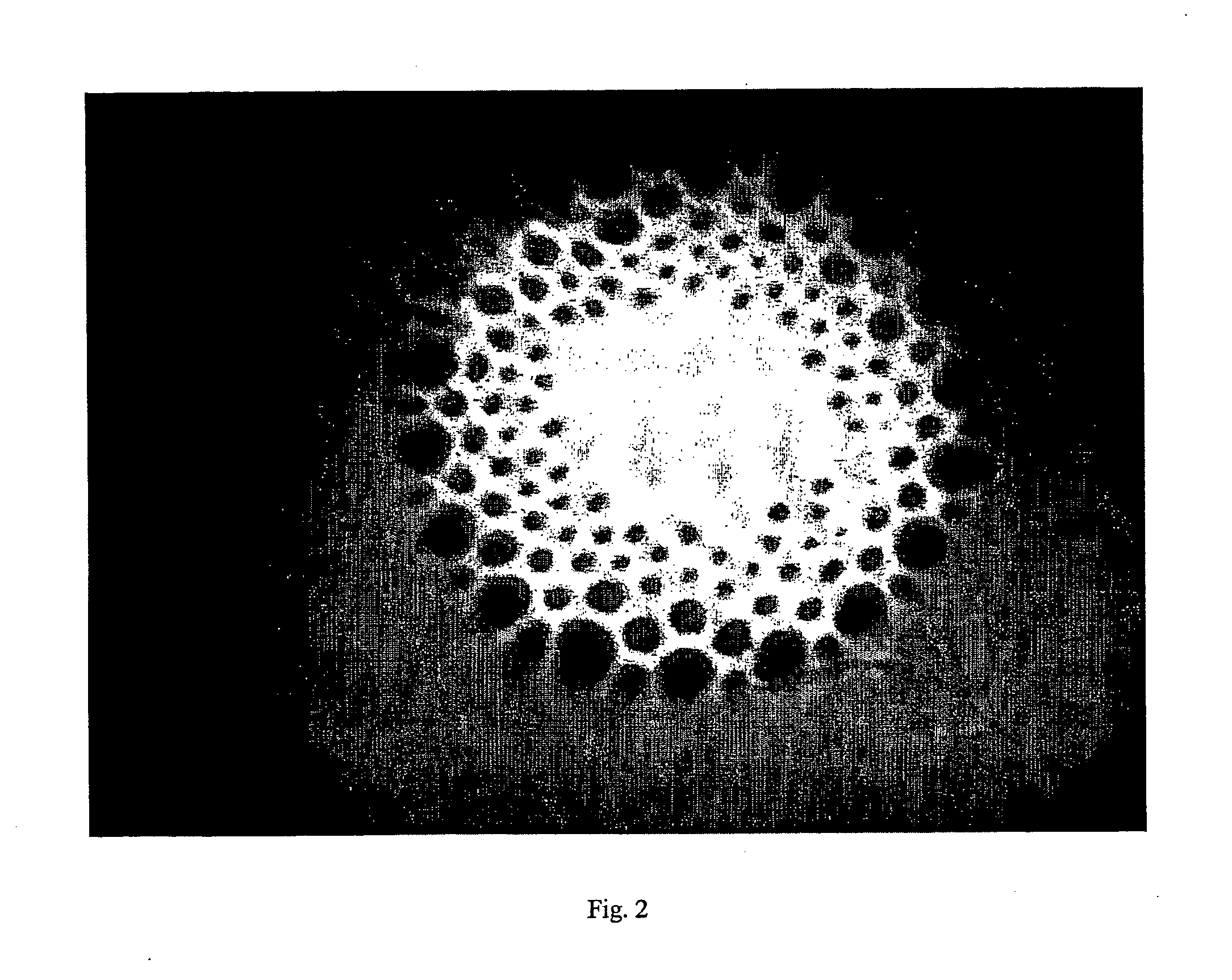Preparing preforms for fibre fabrication
a technology of preforms and optical fibres, applied in the field of producing preforms for optical fibres, can solve the problems of restricted preform size, poor heat conductivity of the material from which optical fibres are typically manufactured, etc., and achieve the effect of increasing the length of optical fibres, reducing the number of fibre connections necessary, and increasing the size and volum
- Summary
- Abstract
- Description
- Claims
- Application Information
AI Technical Summary
Benefits of technology
Problems solved by technology
Method used
Image
Examples
Embodiment Construction
[0029] A number of preferred aspects of the invention will now be described, by way of example only.
[0030] In one embodiment of the invention the preform includes a plurality of holes so as to permit ingress of a heated fluid to heat the interior of the preform. In one preferred embodiment the holes in the preform have parallel axes and extend parallel to the principal axis of the preform. It is further preferable for the holes to extend through the preform. In such an embodiment, the heated fluid can pass through the preform so as to heat the interior of the preform.
[0031] In another embodiment of the invention, the holes in the preform may be heated by pins or protrusions instead of heated air or other fluid. In this embodiment, the pins are heated and inserted into the holes in the preform to produce the desired temperature gradient across the preform to facilitate the subsequent drawing process. In one embodiment, such pins or protrusions can form part of a mould in which the ...
PUM
| Property | Measurement | Unit |
|---|---|---|
| Diameter | aaaaa | aaaaa |
| Density | aaaaa | aaaaa |
| Temperature | aaaaa | aaaaa |
Abstract
Description
Claims
Application Information
 Login to view more
Login to view more - R&D Engineer
- R&D Manager
- IP Professional
- Industry Leading Data Capabilities
- Powerful AI technology
- Patent DNA Extraction
Browse by: Latest US Patents, China's latest patents, Technical Efficacy Thesaurus, Application Domain, Technology Topic.
© 2024 PatSnap. All rights reserved.Legal|Privacy policy|Modern Slavery Act Transparency Statement|Sitemap



